Low Labor, Low Water, Hot Composting
COMPOSTING:
The biological reduction of organic materials into humus or soil.
HOT COMPOSTING:
Heat generated in the damp volume of organic materials decomposes materials into soil. (takes a few months)
COLD COMPOSTING:
Allowing materials to decompose slowly without intervention. (takes years in the dry desert)
COMPONENTS OF COMPOSTING
The Rodale Book of COMPOSTING paperback, 1990, lists 71 sources of nitrogen, 25 sources of phosphate, 56 sources of potash.
ORGANIC MATERIALS include, but not limited to:
WET: (nitrogen) fresh plant trimmings (no oleander), weeds, kitchen vegetable wastes, fresh chicken or rabbit manure... DRY: (carbon) dried plant trimmings,(no oleander), dried weeds, paper, cardboard, hair, worn out natural fiber clothes, towels, sheets, dry chicken or rabbit manure, feathers, left over chunks from the last compost sifting.
Never use oleander.
NATURAL ACTIVATORS:
manure, kitchen scraps, dried blood, compost, humus rich soil, URINE from healthy people, consider medications or infections.
USING URINE FOR COMPOST MOISTURE.
Less Flush. Watershed Management Group estimates that by not flushing for urine each person saves daily up to 10 gallons of drinking water. That’s saving 3,650 gallons per person per year and up to 550 kilowatt hours each year pumping the water up hill, and treating the water before we flush and treating the waste water after. I think we save even more water and pumping power.
Did you know a large part of the electricity used in the desert is for pumping water. Well anywhere, but mostly in the deserts.
Urine contains nitrogen, potassium, and phosphorus, is a compost activator, and can be used as a direct plant fertilizer diluted with 10 parts H2O.
Pre-soak dry materials in urine, add urine to the materials in the bin as needed. The hot process dries out the material in the center of the pile.
Odor is gone from the compost bin in a few days. In the desert we keep the bins covered to keep in moisture unless it is currently raining. My best friend delivers a few gallons of urine to my door step and I say “Look Honey, the Urine Fairy came last night.”
PRE-SOAK METHOD
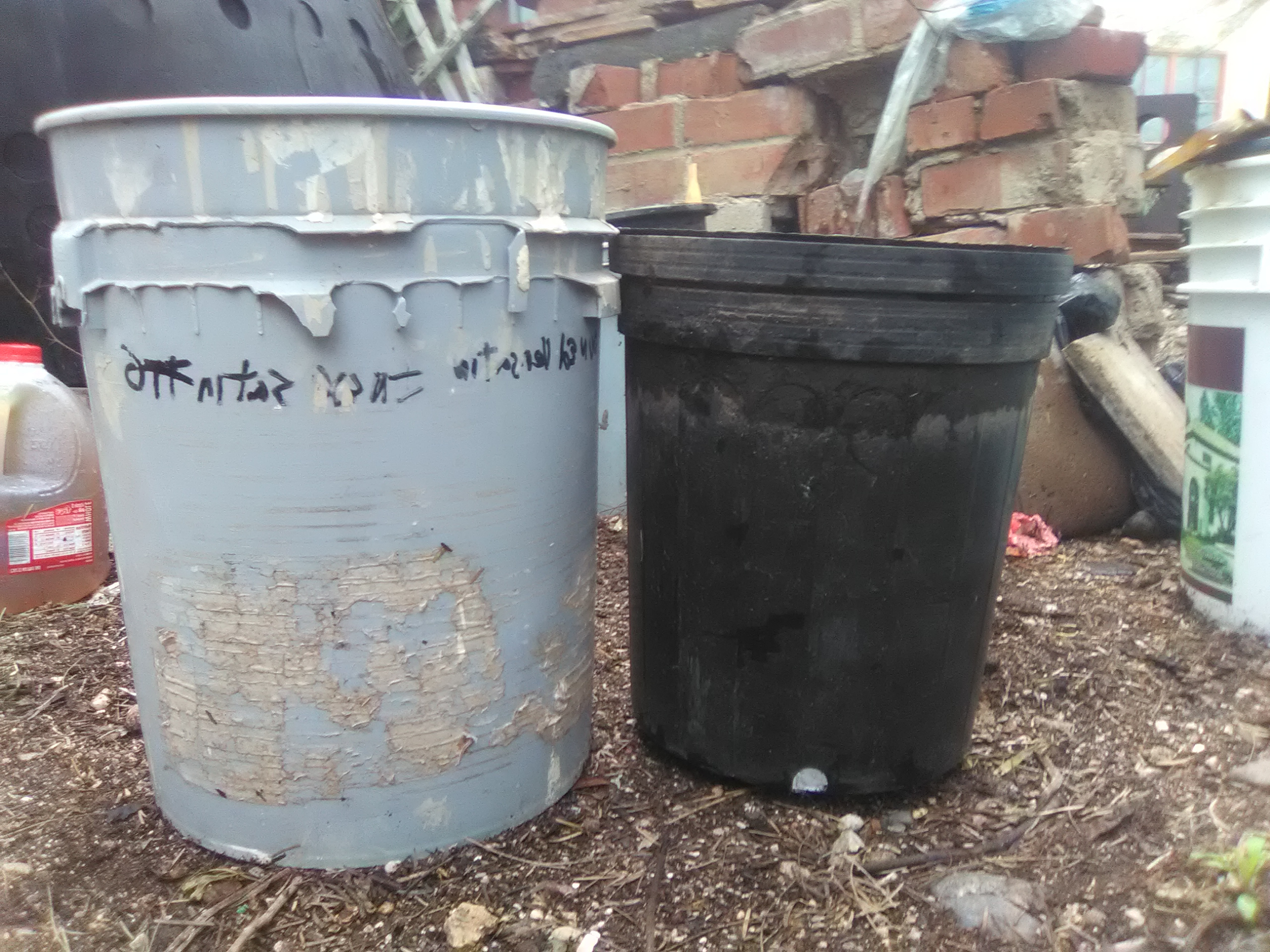
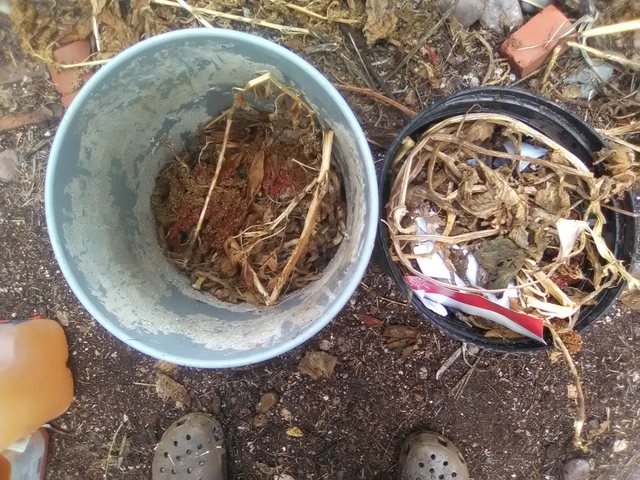
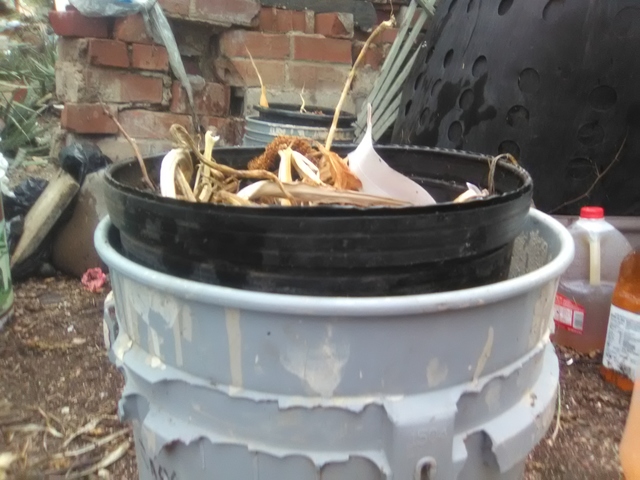

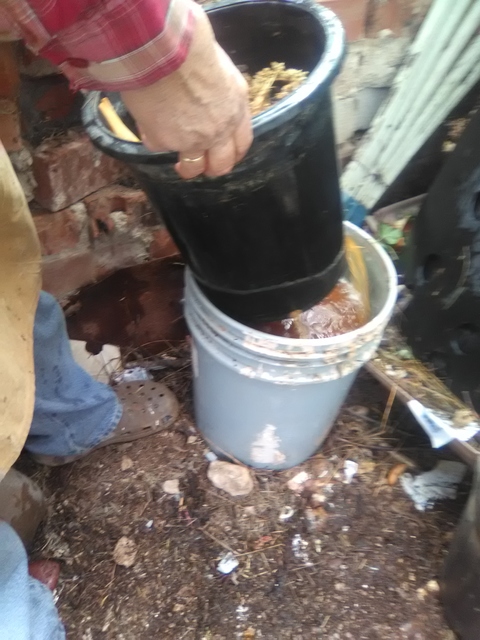
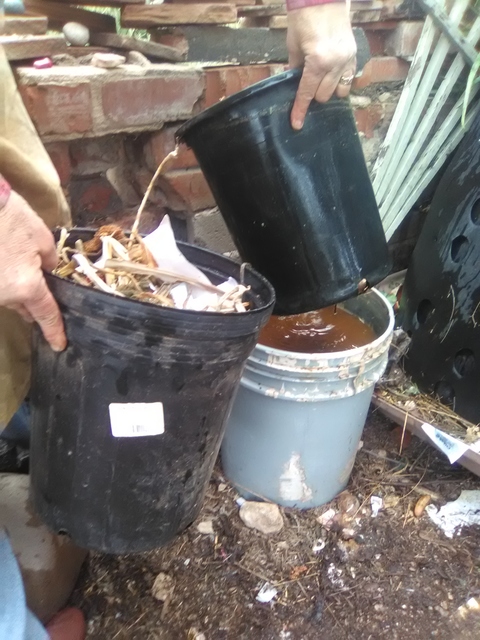

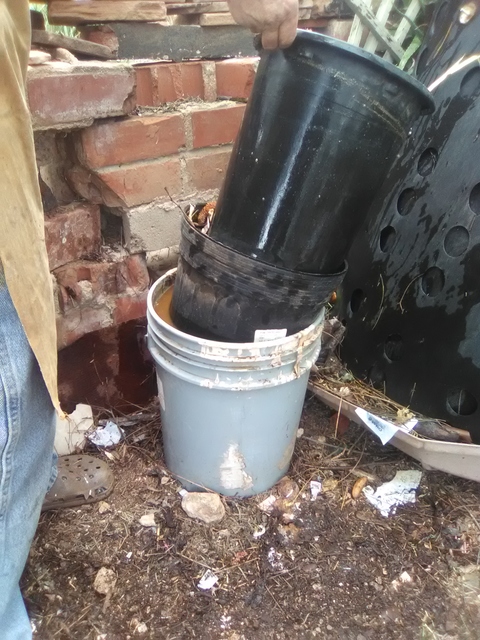
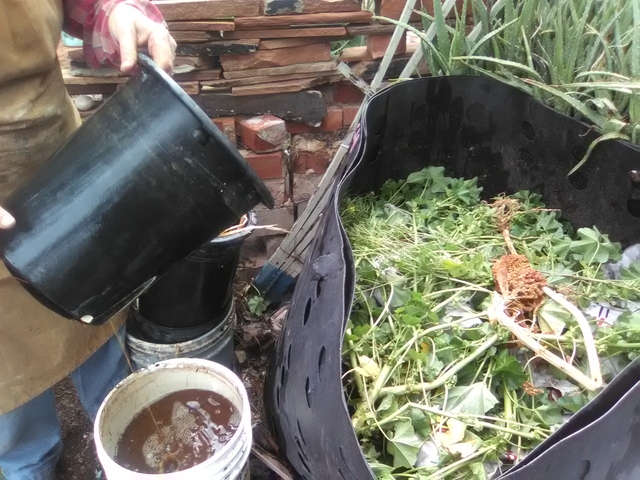
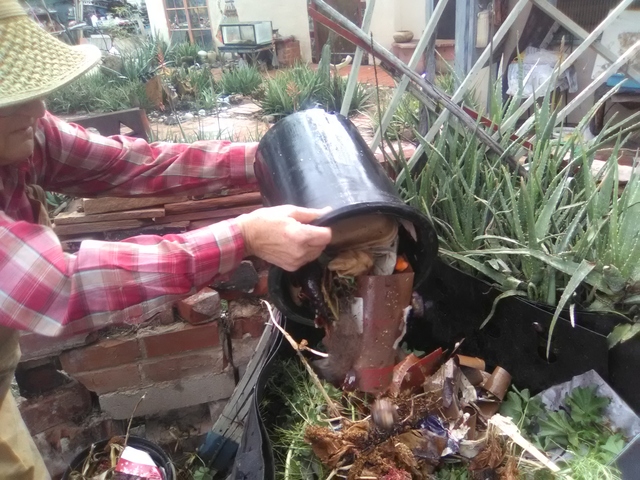
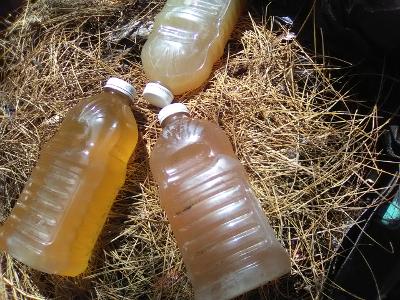
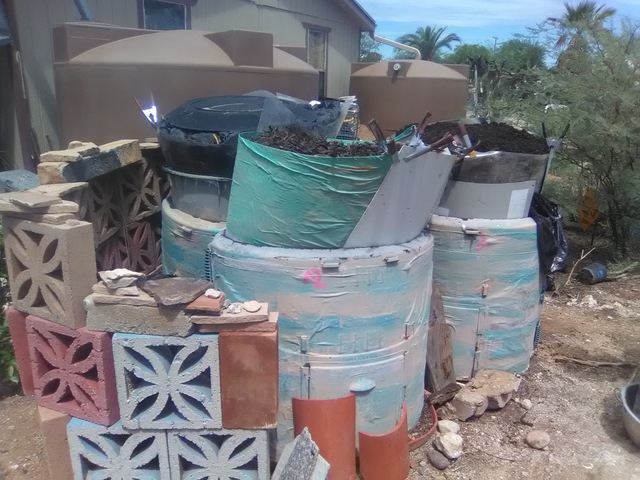
Make basin in center of materials for evaporated moisture to drip down from plastic bag coverings. Use plastic bags on top of materials even with a bin's plastic lid.
After compost’s hot process you can make a collar on the top of the bin, fill with more unfinished compost, top with a few inches of finished soil and plant garden on top. When growing season is over the rough compost below is well aged, kept moist by watering plants above and ready to sift out finished soil for next season’s planting.
Any large chunks sifted out contain starter microbes and bacteria for the next batch of compost, prevent compaction, and continues to break down. The more varied the materials the richer the compost mix.
The average household with vegetable garden and landscaping can transform 54-125 cubic feet of organic material to 15-30 cubic feet of composted soil instead of landfill every year. I compost yard materials from three yards, and friends bring me bags of mesquite beans every summer and bags of mesquite leaves every spring.
HOT COMPOSTING
PROS: quick, kills most weed seeds and pathogens.
CONS: more labor intensive, requires moisture, requires mass, conserves less nitrogen.
COLD COMPOSTING
PROS: Low labor, contains disease suppressing microbes, more nitrogen, requires little mass.
CONS: nutrient loss with extended exposure, can take up to 3 years in the desert, doesn’t kill pathogens or weed seeds.